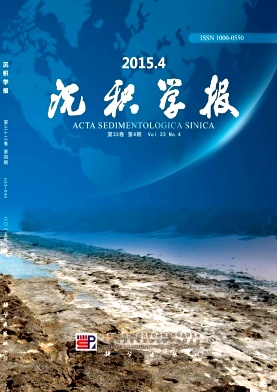Holocene Climate Fluctuations from the Record of Trace Elements in the Mu Us Desert: Evidence from the DGS1 segment of the Salawusu River Valley
doi: 10.14027/j.cnki.cjxb.2015.04.012
- Received Date: 2015-01-14
- Rev Recd Date: 2015-03-09
- Publish Date: 2015-08-10
-
Key words:
- Mu Us Desert /
- DGS1 in Dishaogouwan section /
- trace elements /
- Holocene climate changes
Abstract: The DGS1 segment of the Dishaogouwan section in the Salawusu River Valley on the southeast edge of the Mu Us Desert is selected to study the climate fluctuations on millennium-scale during the Holocene. Based on the trace elements analysis and age determination, we find that the contents of P, V, Cu, Zn, Sr, Ni, As, Cr, Pb are least in the paleosols, less in the dune sands than that in the lacustrine facies, because they are easy to migrate and slightly stable; the contents of Co, Rb, Nb, Ba, Cl, Zr, are most in the paleosols, more in the dune sands than that in the lacustrine facies, because they are stable inert elements. The results suggest that the dune sands are mainly the aeolian sediments in the dominance of the winter monsoon, and the paleosols and lacustrine facies are the sediments in the dominance of the summer monsoon. According to the changes in the alternations of peaks and valleys of these trace elements, the DGS1 is divided into four periods: warming period(11 000~10 130 a B.P.), Megathermal period(10 130~6 590 a B.P.), cooling period (6 590~3 760 a B.P.)and cold period(3 760~0 a B.P.), which are consistent with the related research results abroad and domestic. It reveals that the climate variations in the Salawusu River Valley are subject to the global environmental changes.
| Citation: | NIU DongFeng, LI BaoSheng, WANG FengNian, CHEN Qiong, SHU PeiXian, WEN XiaoHao, CHEN Min. Holocene Climate Fluctuations from the Record of Trace Elements in the Mu Us Desert: Evidence from the DGS1 segment of the Salawusu River Valley[J]. Acta Sedimentologica Sinica, 2015, 33(4): 735-743. doi: 10.14027/j.cnki.cjxb.2015.04.012 |






 DownLoad:
DownLoad: